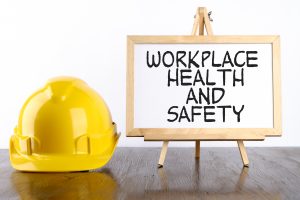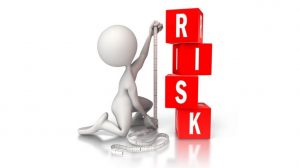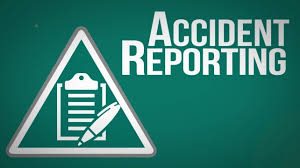
Employer’s duty of care
As an employer, you have a certain set of legal responsibilities for your staff. This includes ensuring their wellbeing and health and safety.
An employer’s duty of care encompasses a number of duties. The first, and most obvious, is the main overarching duty to ensure the health, safety and welfare of all your employees, as far as is “reasonably practicable”, as laid out by the Health and Safety at Work, etc Act 1974.
This includes providing them with a safe and healthy work environment, preventing:
•illness
•injury
•mental ill health.
This duty of care extends to the health, safety and welfare of non-employees as well, eg contractors, visitors, and clients.
The law also requires you to carry out a risk assessment. This will address the hazards in the workplace that may cause harm.
Another duty covers consultation. Legally, you must consult employees or their representatives on the health and safety risks they will face as part of their role, as well as the control measures you are putting into place to keep them safe.
First, a safe work environment is a productive work environment. If staff are ill or injured, they will need to take time off work. If employees have concerns regarding their safety or wellbeing, their attitude towards work will be less positive. Actively promoting employee wellbeing will increase employee engagement, increase productivity and significantly improve your retention rate.
Second, an unsafe workplace will suffer major reputational damage, particularly if an incident occurs. If an employee suffers from a work-related illness or accident, you could be held responsible. It may also lead to employment tribunals and even criminal prosecution.
Duty of care is a legal duty. Failure to plan adequately for the health and safety of employees will constitute a breach of this duty and can lead to visits from the Health and Safety Executive and significant fines.
An employer’s duty of care includes health and safety. You must ensure that suitable safety standards are created with associated safe systems of work. These should cover employees who work from home.
Within this definition is a duty for employee mental wellbeing. That means safeguarding your workers as far as is reasonably practicable from harassment and stress.
Here are some ways you can keep your staff safe, both mentally and physically:
•provide adequate equipment required to complete tasks
•provide health and safety training
•protect staff from discrimination
•have clear lines of communication
•manage and address staff misconduct and grievances.
An employer only has to comply with the duty of care in so far as it is reasonably practicable to do so. The test of what is reasonably practicable is not merely whether preventive measures were physically possible, or even financially possible. The accused employer must be able to show that it has weighed the degree of risk against how much it would cost the organisation — whether in time or money — to put in place adequate precautions. If it would cost a great deal to reduce the risk by only a fraction, you do not need to do so.
Examples of reasonably practicable actions include the following.
1.An employee informs their manager they’re suffering from pain in their wrists from their keyboard. As an employer, you can then provide them with a specialist keyboard, which can help prevent repetitive strain injury.
2.Another example would be to provide extra access points for those in your business with a disability. This will ensure they don’t struggle to exit and enter your premises and shows that you take their wellbeing seriously.
Contact us if you require further information.

Workplace inspections help prevent injuries and illnesses while promoting safe working. Through critical examination of the workplace, inspections identify and record hazards for corrective action. Joint occupational health and safety committees plan, conduct, report and monitor inspections. Regular workplace inspections are an important part of the overall occupational health and safety program.
As an essential part of a health and safety program, a company should examine the workplace to:
Look at all workplace elements – the environment, the equipment and the process. The environment includes such hazards as noise, vibration, lighting, temperature, and ventilation. Equipment includes materials, tools and apparatus for producing a product or a service. The process involves how the worker interacts with the other elements in a series of tasks or operations.
Types of workplace hazards include:
Inspection records are important. Past inspection records show what inspectors identified. They also show what an inspection team concentrated on and what areas it did not inspect.
The inspection report can draw attention to possible hazards. However, do not simply repeat or copy previous inspections. Check the inspection report to confirm implementation of previous recommendations.
The following describes three other types of inspection reports:
Supervisors and workers repeatedly conduct ongoing inspections as part of their job responsibilities. Such inspections identify hazardous conditions and either correct them immediately or report them for corrective action. The frequency of these inspections varies with the amount and conditions of equipment use. Daily checks by users assure that the equipment meets minimum acceptable safety requirements.
Pre-operation checks involve inspections of new or modified equipment or processes. Workers often perform these after workplace shutdowns.
Periodic inspections are regular, planned checks of critical equipment or system components. These components have a high potential for causing serious injury or illness. The inspections are often part of preventive maintenance procedures or hazard control programs.
The law specifies that qualified persons inspect some types of equipment on a recurring basis. This includes elevators, boilers, pressure vessels, and fire extinguishers, at regular intervals.
The health and safety committee should review the progress of the recommendations. This is especially important when they pertain to the education and training of employees. It is also the committee’s responsibility to study the information from regular inspections. This will help in identifying trends for the maintenance of an effective health and safety program.
If you require further information please contact us.

Spot inspections by HSE to ensure workplaces are Covid-secure
The Health and Safety Executive (HSE) is currently carrying out spot inspections in cities and towns where there are coronavirus outbreaks, to check that businesses are Covid-secure.
An inspection process involves checking that businesses are aware of the guidance, and advising where necessary on improvements needed to ensure the workplace is Covid-secure. Most recently, HSE conducted spot inspections on businesses in Bradford.
Working with other public local and national government authorities, inspectors are currently out and about visiting businesses, putting employers on the spot and checking that they are complying with the latest guidance.
Here are some practical steps that businesses can take to be Covid-secure before spot inspections are carried out by the HSE to ensure workplaces are Covid-secure:
HSE has been utilising a number of different ways to gather intelligence and reach out to businesses with a combination of site visits, phone calls and through collection of supporting visual evidence.
Some of the most common issues that HSE and local authority inspectors are finding, across the country, include failing to:
You have an absolute legal duty to monitor, maintain and review all matters and arrangements of health and safety. By adhering to the Audit requirement and process an Organisation will be able to demonstrate that health and safety is pro-actively managed in accordance with legislative, Insurers and Fire Department requirements.
An Audit will also act as a suitable defence in a court of law, should either Civil or Criminal proceedings be instigated.
Contact us for further information.
Keep Safe!

You must only make a report under RIDDOR (The Reporting of Injuries, Diseases and Dangerous Occurrences Regulations 2013) when:
• an unintended incident at work has led to someone’s possible or actual exposure to coronavirus. This must be reported as a dangerous occurrence.
• a worker has been diagnosed as having COVID 19 and there is reasonable evidence that it was caused by exposure at work. This must be reported as a case of disease.
• a worker dies as a result of occupational exposure to coronavirus.
Dangerous occurrences
Read about RIDDOR 1
If something happens at work which results in (or could result in) the release or escape of coronavirus you must report this as a dangerous occurrence. An example of a dangerous occurrence would be a lab worker accidentally smashing a glass vial containing coronavirus, leading to people being exposed.
Cases of disease: exposure to a biological agent
Read about RIDDOR 2
If there is reasonable evidence that someone diagnosed with COVID-19 was likely exposed because of their work you must report this as an exposure to a biological agent using the case of disease report. An example of a work-related exposure to coronavirus would be a health care professional who is diagnosed with COVID-19 after treating patients with COVID-19.
Read about RIDDOR 3
If someone dies as a result of a work-related exposure to coronavirus and this is confirmed as the likely cause of death by a registered medical practitioner, then you must report this as a death due to exposure to a biological agent using the ‘case of disease’ report form. You must report workplace fatalities to HSE by the quickest practicable means without delay and send a report of that fatality within 10 days of the incident.
Find out more about reporting incidents 4
Contact us if you require further information.

 The short answer is “because it’s every employer’s duty”. Being an employer is about much more than just obeying the letter of the law. You also want to make your workforce is as productive as possible and you need to attract talented people by being a good place to work.
The short answer is “because it’s every employer’s duty”. Being an employer is about much more than just obeying the letter of the law. You also want to make your workforce is as productive as possible and you need to attract talented people by being a good place to work.
The bottom line is that employers have a legal obligation to manage health and safety in the workplace. That means controlling risk. Risks can only be controlled once they have been identified and quantified.
That’s why it’s the responsibility of every employer to conduct a health and safety risk assessment. Defining the hazards present in the workplace so that action can be taken to manage them.
The law is crystal clear on this point. Businesses with five or more employees must not only conduct a risk assessment, but also record the findings in a written report. This information must be shared with employees carrying out the tasks that have been assessed, including those that may work in the same area.
Organisations with fewer than five employees are still required to assess the risks in the workplace. There’s no obligation to write the results down, but there’s a strong case for doing it anyway. Creating a written report clarifies matters, focuses minds and makes it much easier to update the assessment when things change, for example, if there is a new process or new equipment is introduced.
If you are confident you understand the risks in your workplace, you can conduct your own workplace risk assessment, however if you’re in any doubt about any aspect of the assessment or the level of risk, it’s wise to call in the experts. Conducting expert risk assessments is a key aspect of the service available from Walker Health and Safety Services Limited.
Before deciding whether you need expert advice, consider the worst-case scenario. Imagine finding yourself in court because of a Health and Safety incident in your workplace. That’s when an inaccurate or incomplete risk assessment can cost you a big fine, and perhaps even close the business down.
If you need to conduct a risk assessment or are not sure the one you have in place is fit for purpose, don’t hesitate to contact Walker Health and Safety Services Limited for advice.